
How to Use Servo: Examples, Pinouts, and Specs
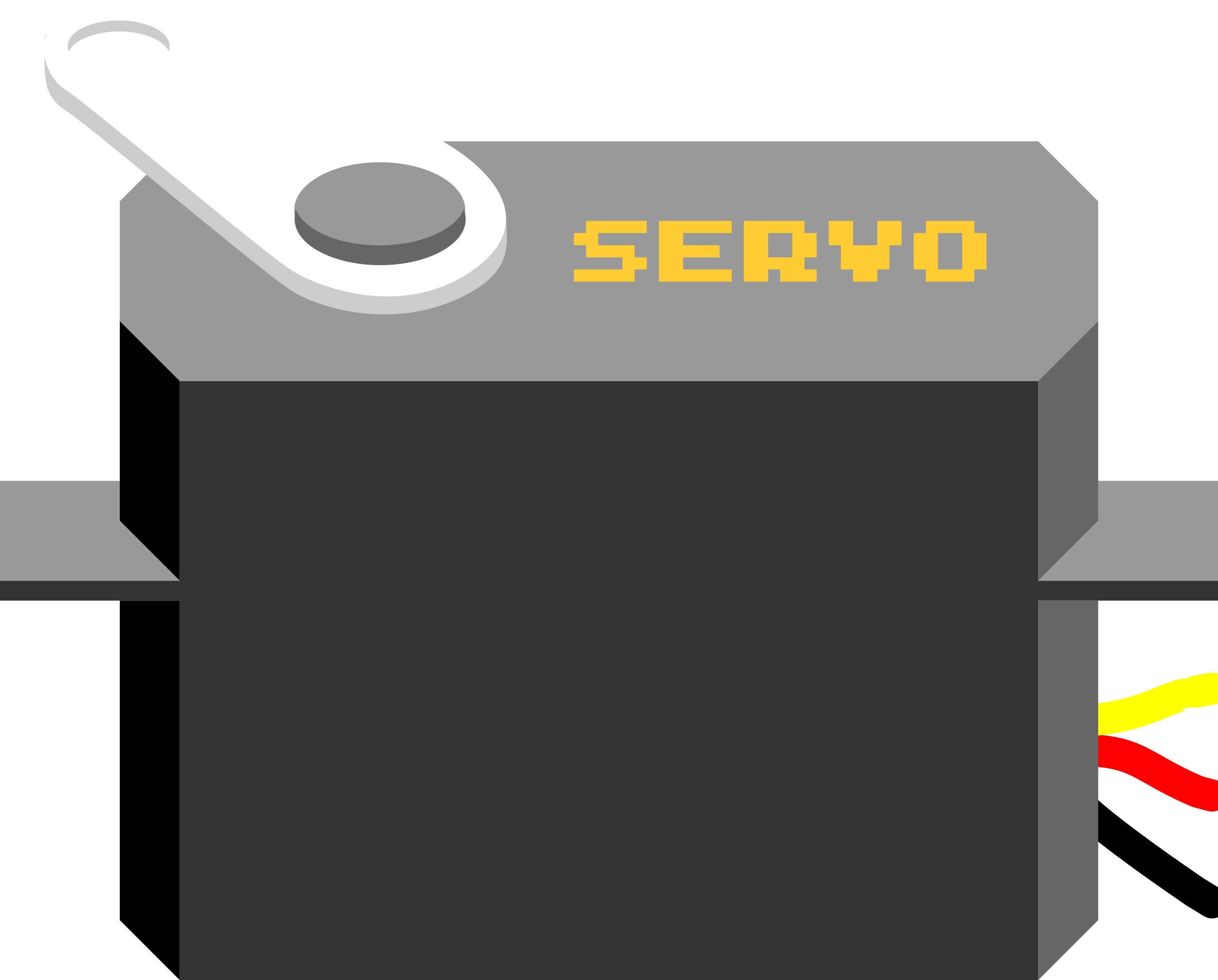
 Design with Servo in Cirkit Designer
Design with Servo in Cirkit DesignerIntroduction
A servo is a rotary actuator that allows for precise control of angular position, velocity, and acceleration. It consists of a motor coupled to a sensor for position feedback, along with a control circuit. Servos are widely used in robotics, automation, remote-controlled vehicles, and other applications requiring accurate movement and positioning.
Explore Projects Built with Servo
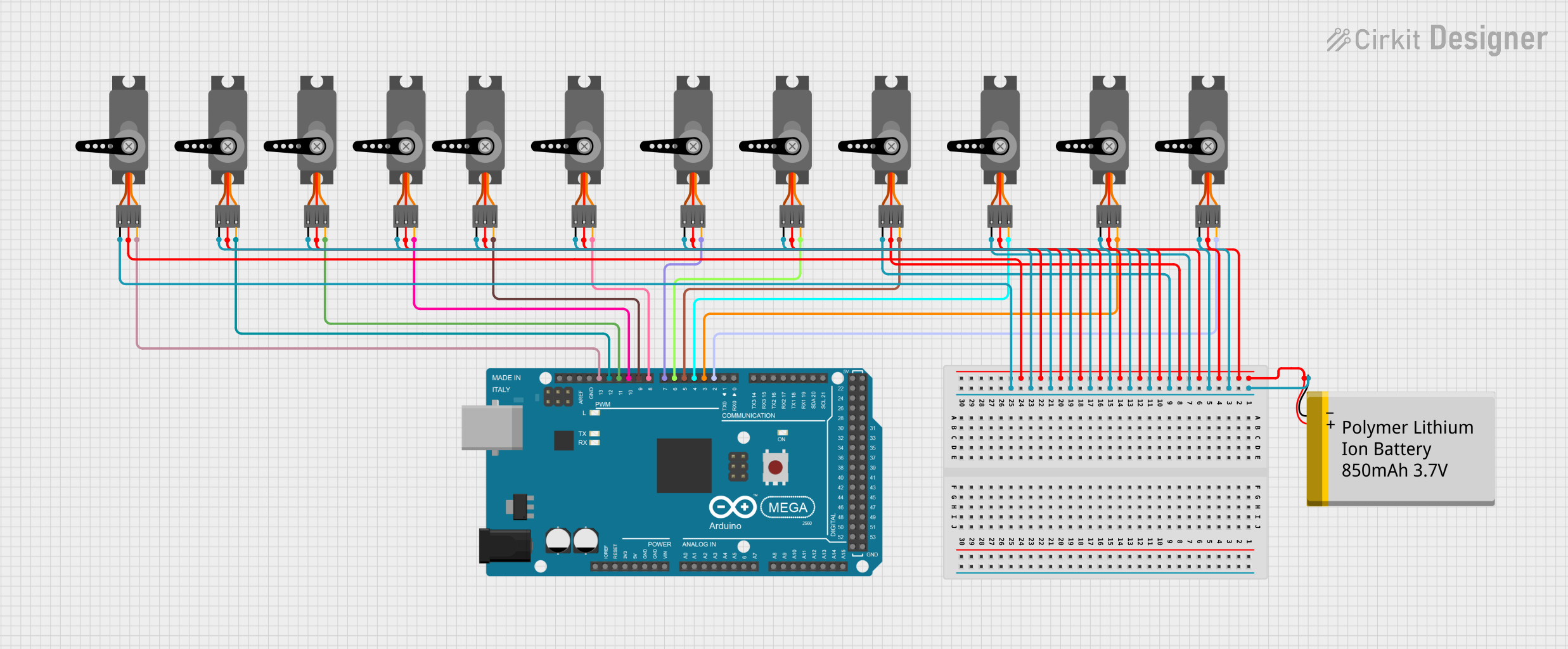
 Open Project in Cirkit Designer
Open Project in Cirkit Designer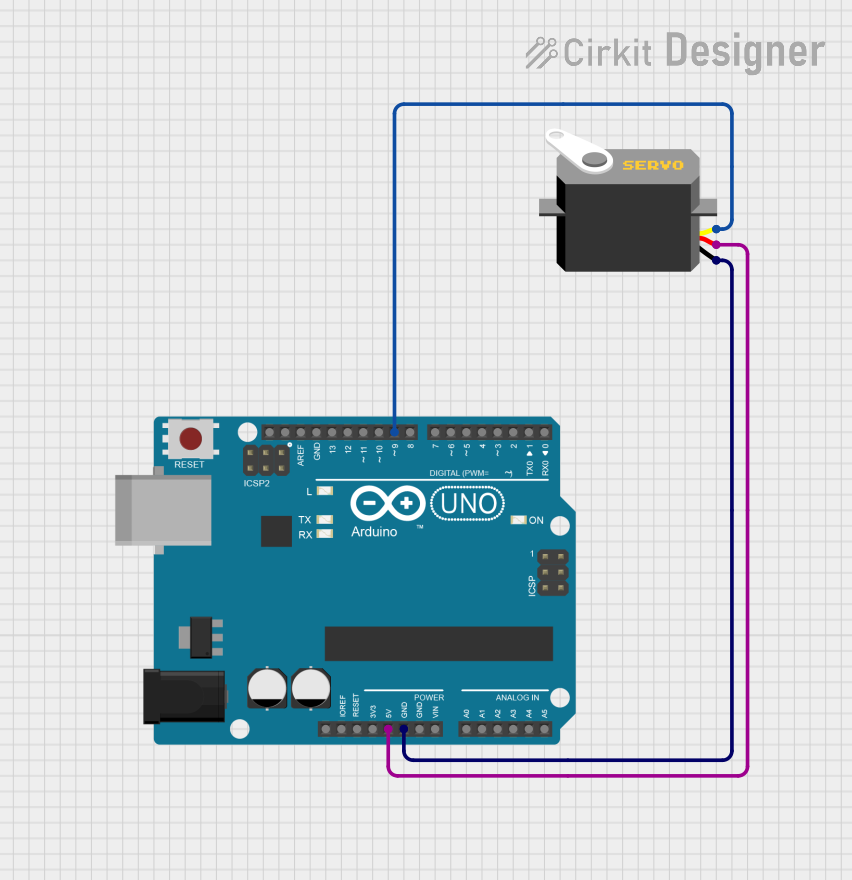
 Open Project in Cirkit Designer
Open Project in Cirkit Designer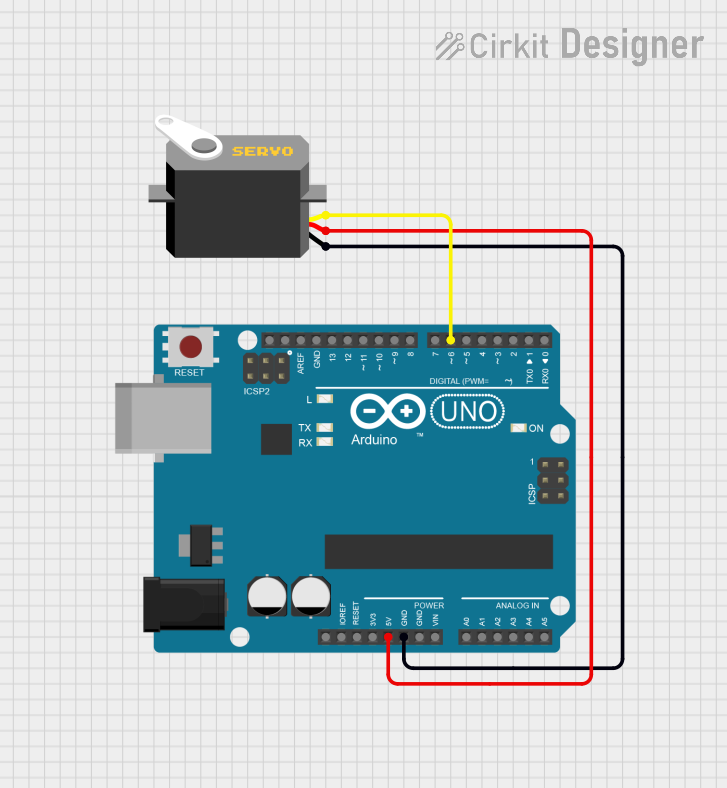
 Open Project in Cirkit Designer
Open Project in Cirkit Designer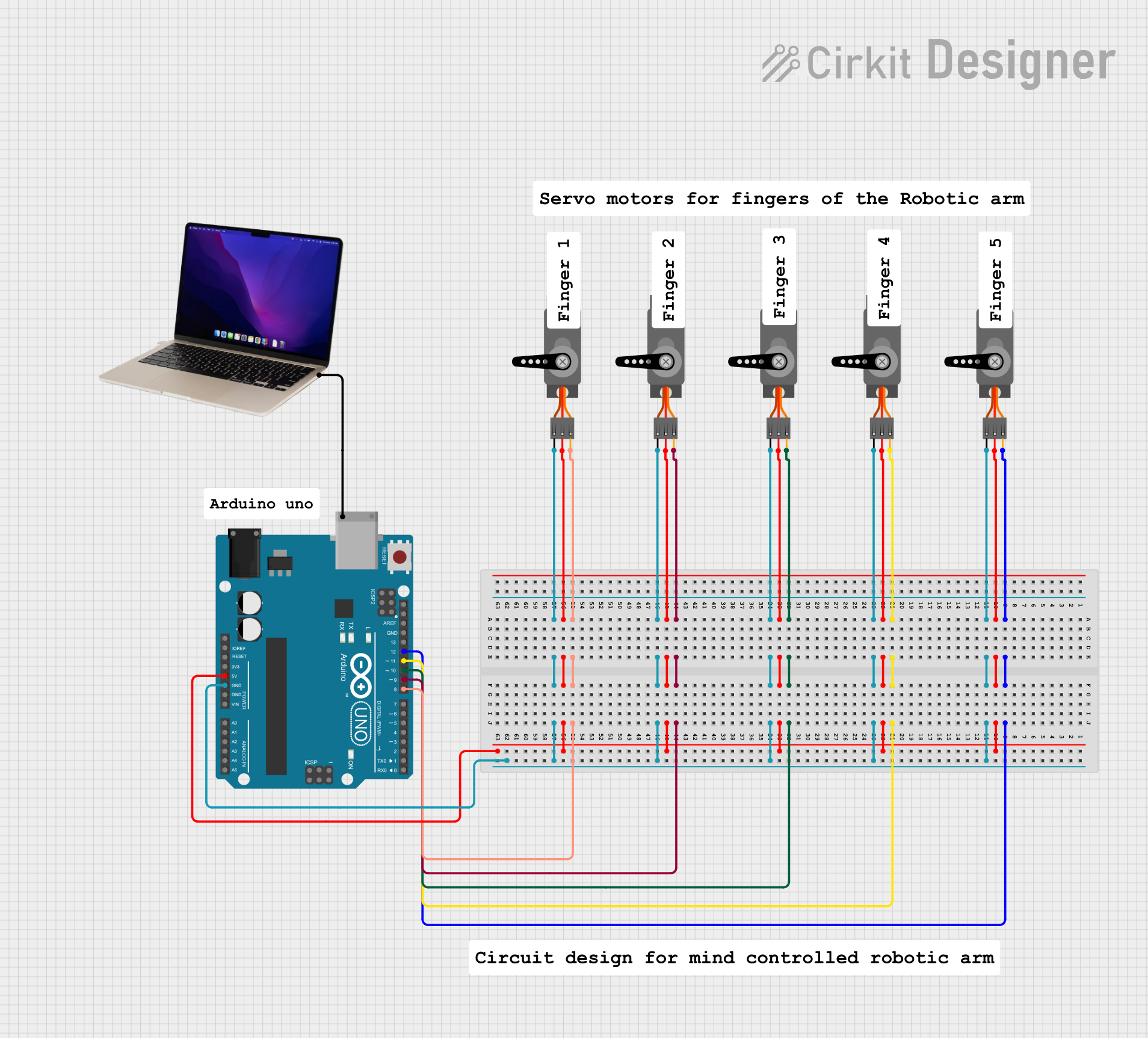
 Open Project in Cirkit Designer
Open Project in Cirkit DesignerExplore Projects Built with Servo

 Open Project in Cirkit Designer
Open Project in Cirkit Designer
 Open Project in Cirkit Designer
Open Project in Cirkit Designer
 Open Project in Cirkit Designer
Open Project in Cirkit Designer
 Open Project in Cirkit Designer
Open Project in Cirkit DesignerCommon Applications and Use Cases
- Robotics: For controlling robotic arms, grippers, and joints.
- Remote-controlled vehicles: Steering mechanisms and throttle control.
- Automation: Conveyor belts, camera gimbals, and industrial machinery.
- Hobby projects: Model airplanes, boats, and cars.
- DIY electronics: Projects requiring precise angular movement.
Technical Specifications
Below are the general technical specifications for a standard hobby servo. Note that specifications may vary depending on the specific model and manufacturer.
Key Technical Details
- Operating Voltage: 4.8V to 6V (typical range)
- Current Draw: 10mA to 100mA (idle), up to 1A (under load)
- Torque: 1.5 kg-cm to 20 kg-cm (varies by model)
- Rotation Range: Typically 0° to 180° (some models support 360° continuous rotation)
- Control Signal: Pulse Width Modulation (PWM)
- Pulse width: 1ms (0°), 1.5ms (90°), 2ms (180°)
- Frequency: 50Hz (standard)
Pin Configuration and Descriptions
Servos typically have three wires for connection. The pinout is as follows:
| Pin Name | Wire Color (Common) | Description |
|---|---|---|
| Signal | Orange/White | Receives PWM signal for position control |
| VCC | Red | Power supply (4.8V to 6V) |
| GND | Brown/Black | Ground connection |
Usage Instructions
How to Use the Servo in a Circuit
- Power the Servo: Connect the VCC pin to a 5V power source and the GND pin to the ground of your circuit.
- Control Signal: Connect the Signal pin to a PWM-capable pin on your microcontroller (e.g., Arduino).
- PWM Signal: Generate a PWM signal to control the servo's position. The pulse width determines the angle:
- 1ms pulse: 0° position
- 1.5ms pulse: 90° position
- 2ms pulse: 180° position
Important Considerations and Best Practices
- Power Supply: Use a separate power source for the servo if it draws significant current, as it may cause voltage drops in your circuit.
- Avoid Overloading: Do not exceed the torque rating of the servo to prevent damage.
- Signal Stability: Ensure the PWM signal is stable and within the specified frequency range (50Hz for most servos).
- Mechanical Limits: Avoid forcing the servo beyond its physical rotation limits to prevent damage.
Example: Connecting a Servo to an Arduino UNO
Below is an example of how to control a servo using an Arduino UNO and the Servo library.
#include <Servo.h> // Include the Servo library
Servo myServo; // Create a Servo object
void setup() {
myServo.attach(9); // Attach the servo to pin 9 on the Arduino
}
void loop() {
myServo.write(0); // Move the servo to 0 degrees
delay(1000); // Wait for 1 second
myServo.write(90); // Move the servo to 90 degrees
delay(1000); // Wait for 1 second
myServo.write(180); // Move the servo to 180 degrees
delay(1000); // Wait for 1 second
}
Notes on the Code
- The
Servolibrary simplifies the process of generating PWM signals. - The
myServo.attach(9)function links the servo to pin 9. - The
myServo.write(angle)function sets the servo to a specific angle (0° to 180°).
Troubleshooting and FAQs
Common Issues and Solutions
Servo Not Moving
- Cause: Incorrect wiring or insufficient power supply.
- Solution: Double-check the connections and ensure the power supply meets the servo's requirements.
Jittery or Erratic Movement
- Cause: Unstable PWM signal or electrical noise.
- Solution: Use a decoupling capacitor near the servo's power pins and ensure the PWM signal is stable.
Overheating
- Cause: Overloading the servo or continuous operation under high torque.
- Solution: Reduce the load on the servo or allow it to rest periodically.
Limited Rotation
- Cause: Using a standard servo instead of a continuous rotation model.
- Solution: Verify the servo type and ensure it matches your application.
FAQs
Q: Can I power the servo directly from the Arduino?
A: While possible for small servos, it is not recommended for larger servos due to high current draw. Use an external power source.
Q: How do I control a 360° continuous rotation servo?
A: Instead of setting angles, you control the speed and direction using the PWM signal. A 1.5ms pulse stops the servo, while shorter or longer pulses control the direction and speed.
Q: Can I connect multiple servos to a single Arduino?
A: Yes, but ensure the power supply can handle the combined current draw of all servos. Use separate PWM pins for each servo.
Q: What happens if I exceed the servo's torque rating?
A: Exceeding the torque rating can damage the servo's internal gears or motor. Always operate within the specified limits.